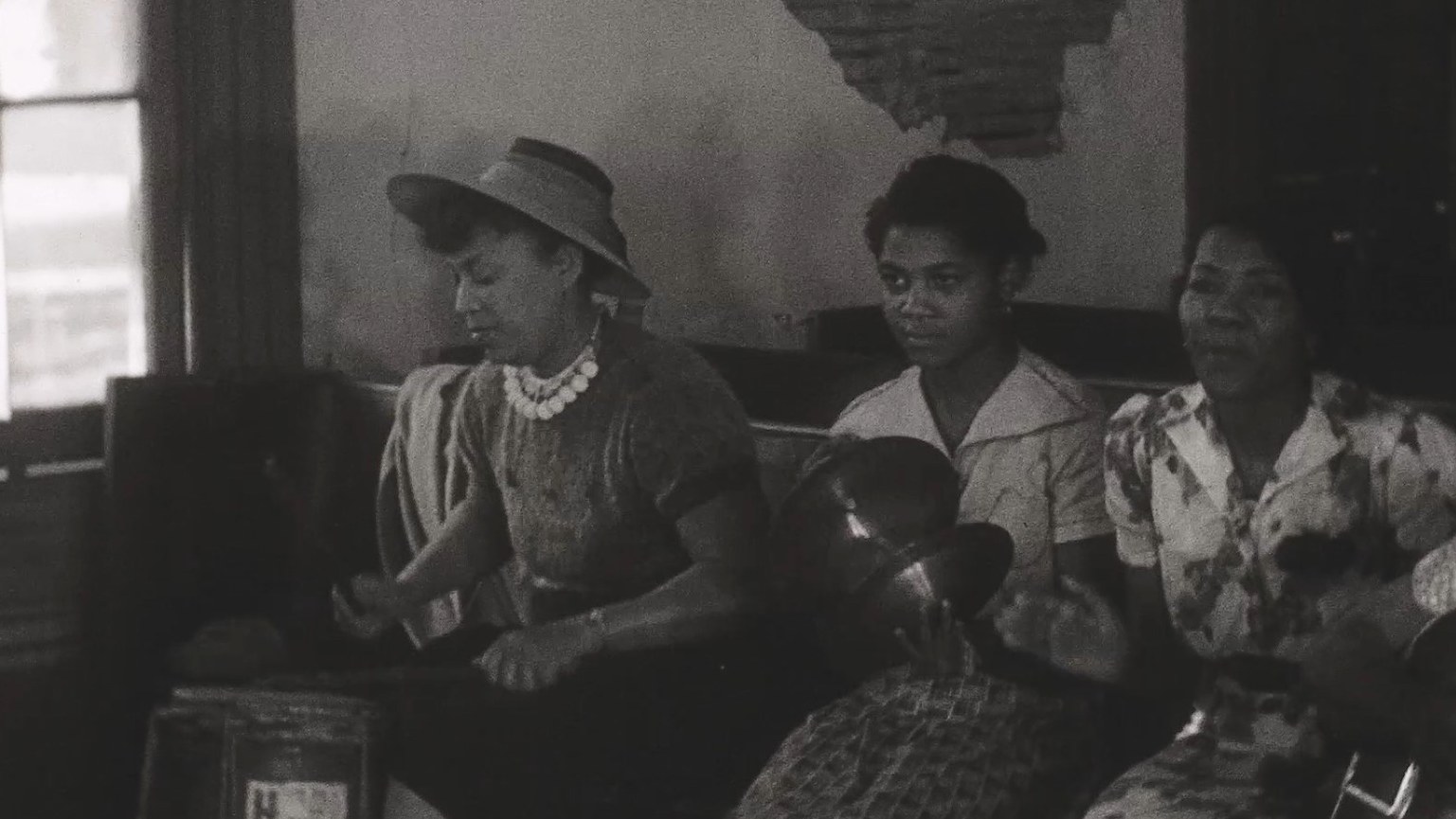Hurston, a well-known author, also produced 15 reels (85 minutes, all silent) of probably the earliest autoethnographic documentation, from around 1928 to 1940 in the American South. Currently, it is a challenge to determine the details of each reel, so I’ll piece it together here the best I can. There are no simple IMDb entries for most of this material, so I’ll just organize it chronologically.

Contents:
I was able to correspond with Tracy Heather Strain, director of the 2023 PBS documentary, Zora Neale Hurston: Claiming a Space. She mentioned that all of Hurston’s films are at the Library of Congress in Washington, DC, reportedly all in 16mm film.* I would love it if someone would set up a Kickstarter to scan and digitize all of it, for release in a box set of Hurston’s Complete Films. For now, I’ve attempted to list below what is available for home viewing, incomplete and only in bits and pieces. I plan on reviewing what is in Letterboxd here: https://letterboxd.com/zepfanman/tag/zora-neale-hurston/reviews/
And here’s a short supplement to Claiming a Space, describing Hurston’s films:
Mini bio
Hurston was born in Notasulga, Alabama, January 7, 1891. From the age of 3, she grew up in Eatonville, Florida, one of the first all-Black incorporated towns in the USA. She attended schools in Baltimore, DC, and ultimately NYC in the mid 1920’s where she became one of the writers at the center of the Harlem Renaissance.
Between 1927 and 1932, Charlotte Osgood Mason supported Hurston’s travel to the South for anthropological research. Hurston also worked with Ruth Benedict, Margaret Mead, and Franz Boas, all White academics. She received a B.A. in anthropology at the age of 37, and her focus on folklore and autoethnographic studies (called “native anthropology”) formed the basis of her life’s work, including her most popular novel, Their Eyes Were Watching God (1937).
Kossula: Last of the Takkoi Slaves

24 minutes of Cudjoe Lewis (born Oluale Kossola, aka Cudjo/Kossula, modern-day Bantè, Benin), one of the last-known African-American slaves. Africatown, Alabama, 1928 (1927?). You can watch some of this on Claiming a Space (40m41s in), or the first 40 seconds of the video below. You see him sitting on a porch, then swinging an axe and posing for the camera.
Hurston completed a biography about Lewis in 1931, but could not get anyone to publish it. The book was finally released in 2018 as Barracoon: The Story of the Last “Black Cargo.”
No IMDb or Letterboxd links for this film yet.
Fieldwork Footage (I)

Loughman, Florida, logging community in 1928, just 3-minutes long on the 2016 Kino Lorber Blu-ray set, Pioneers of African American Cinema. The first part is filmed from a moving train car and shows Black workers pulling lumber from the forest and loading it onto the cars. Then we see a shot of the cars moving through town, loaded with lumber. The final 20 seconds shows a streetcar parked in front of what appears to be a house.
The Blu-ray soundtrack over the (otherwise silent) footage includes two a cappella songs by Hurston herself, “Shove It Over” and “Wake Up, Jacob,” recorded in 1939. She learned the songs from the Loughman logging workers. A copy of this Blu-ray compilation is currently available on YouTube:
Letterboxd and IMDb links.
Fieldwork Footage (II)
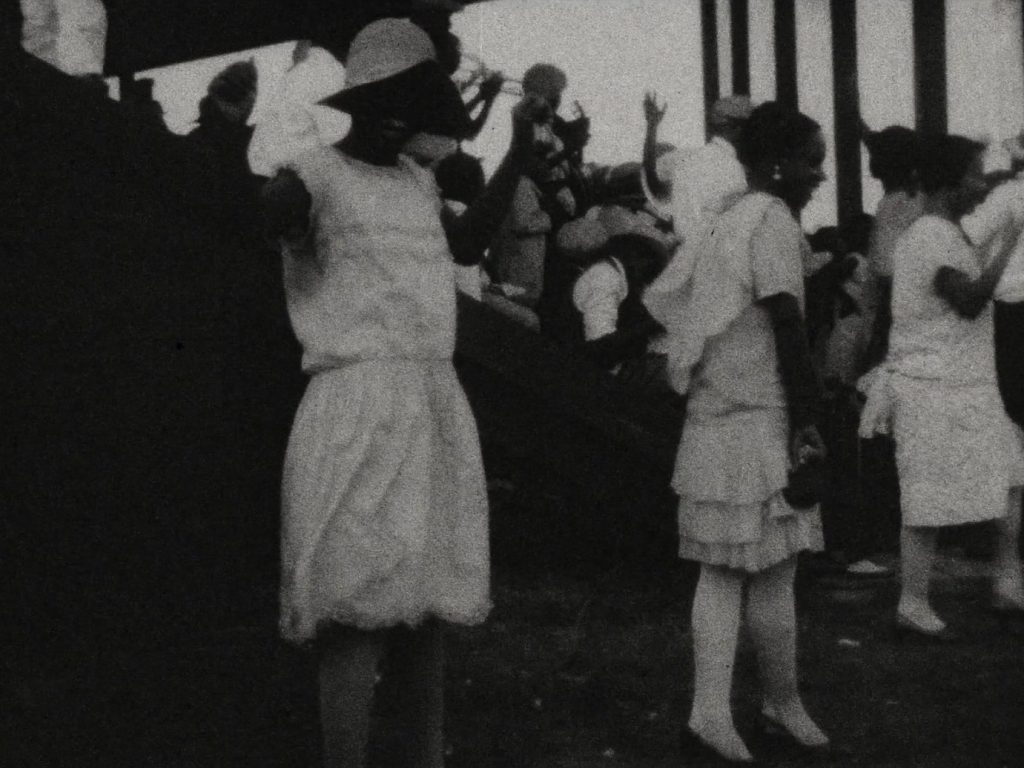


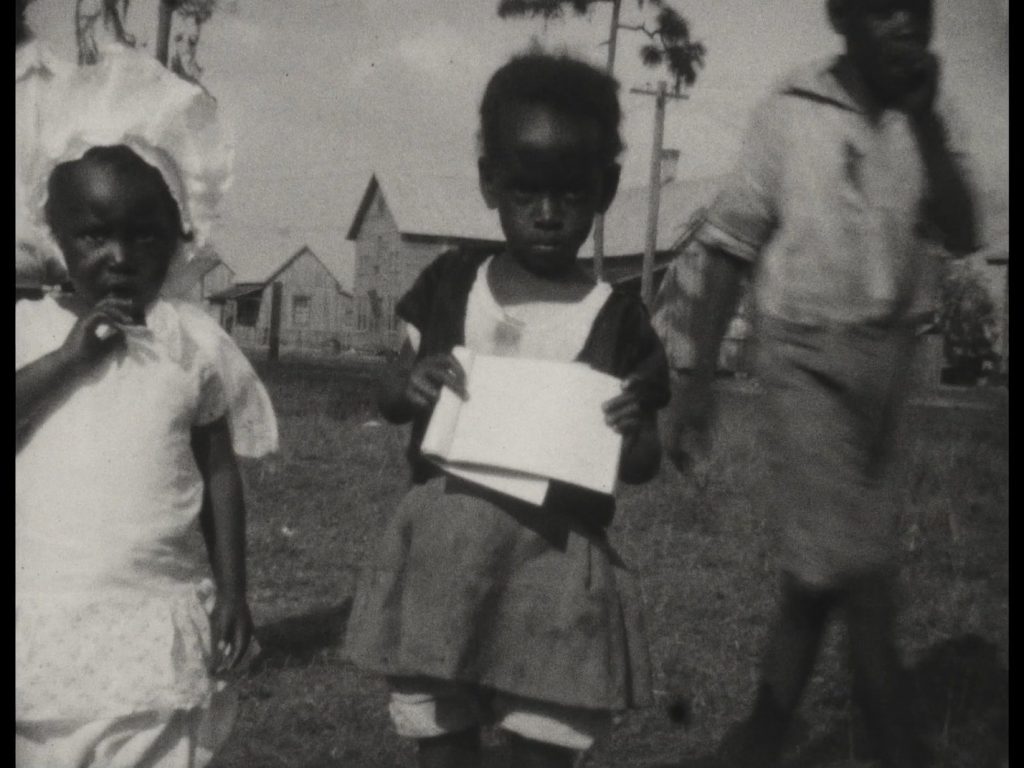
Aka Ethnographic Films. Eight scenes of Black Southern life between 1928-1929 (and perhaps 1927). You can watch some of this on the YouTube clip about Kossula above, but the 12-minute compilation can only be seen on the 2018 Kino Lorber Blu-ray set, Pioneers: First Women Filmmakers. World-renowned Black woman composer Renée Clark Baker & the Chicago Modern Orchestra Project provide the jazz soundtrack for this edition.
Timestamps below, with Kino’s intertitles in bold.
0:00 Baseball Crowd – people dancing behind the bleachers
1:14 Dancing Capers – elementary-aged children dance on a dirt basketball court, kids in a circle, boy doing splits
3:22 Children Dancing – doing the jitterbug on the basketball court, one at a time
4:28 Girl Rocking – close-up of woman and her house and friends, & on a rocking chair
6:13 Children Play – holding up numbers in a grass lot, playing by the shore
8:15 Man With Axe – fast-chopping a log, then posing with his hat
9:04 Children’s Games – girls on sidewalk, boy kissing sand
10:23 Baptism – in a lake, pastor walks them out 20 feet into the water
Letterboxd link. Not currently on IMDb.
Commandment Keeper Church
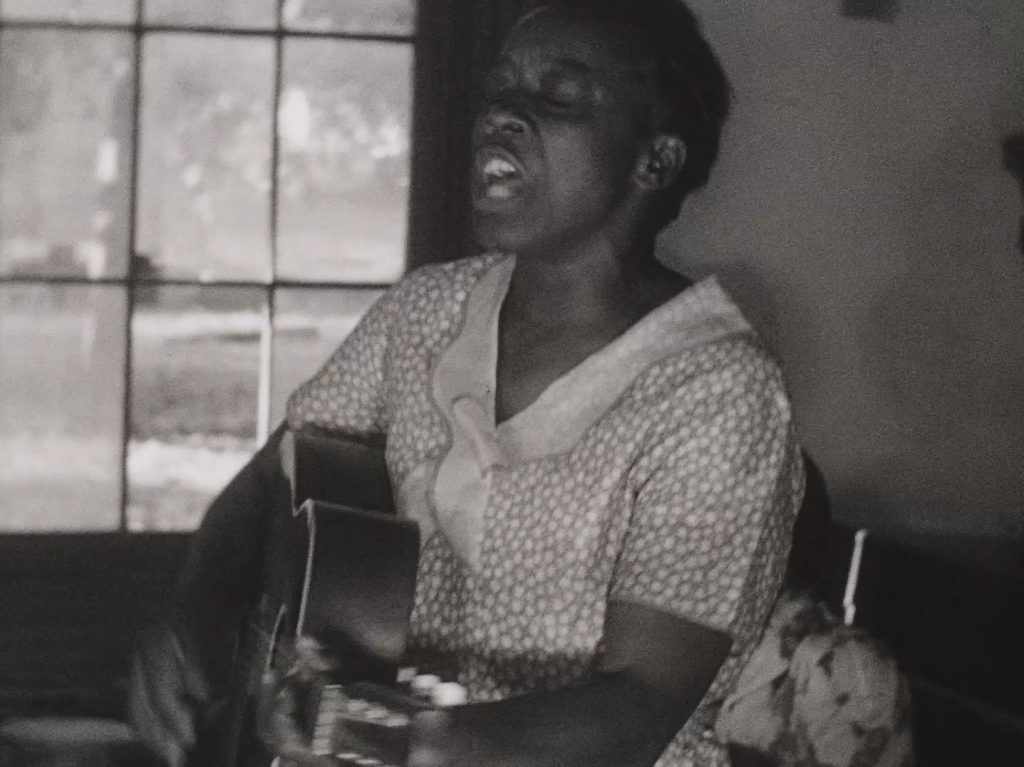
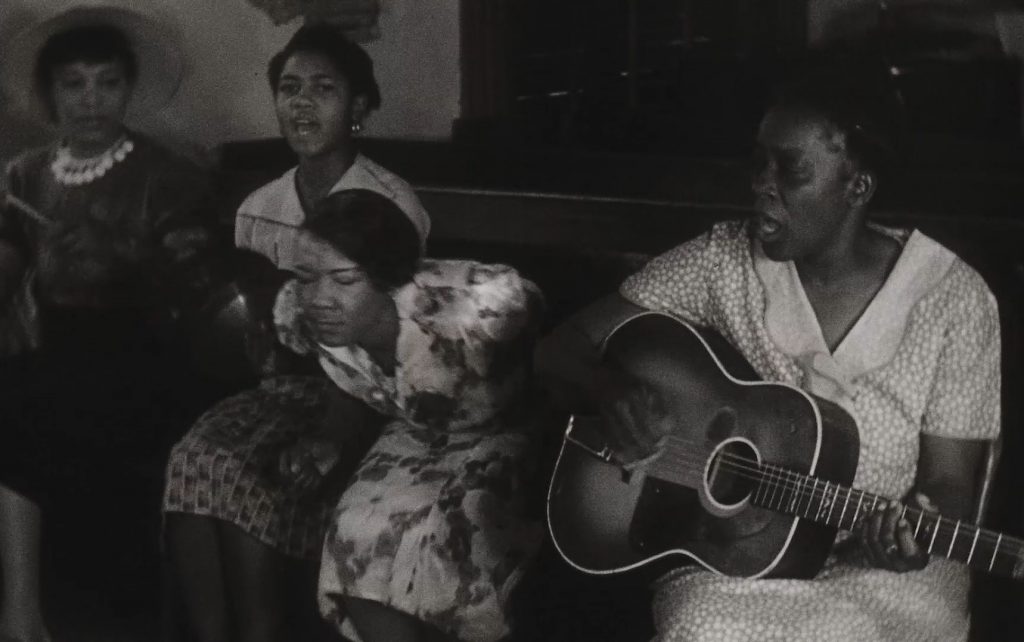
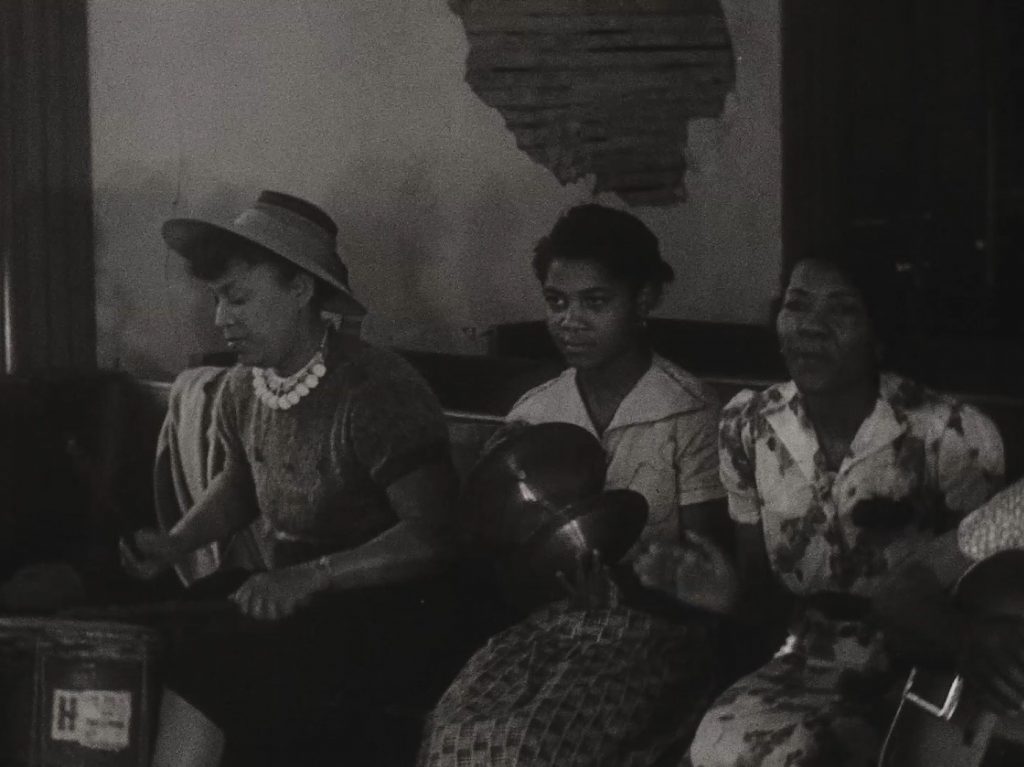



42 minutes (no sound) of the Beaufort, South Carolina, Seventh Day Church of God, May 18-19, 1940. Anthropologist Jane Belo hired Hurston to investigate “trances, or religious ecstasies, in church settings in the South.”
The 2016 Kino Blu-ray cuts it down to 16 minutes along with unsynchronized sound recordings of singing, and possibly speaking in tongues. You can see a few unique clips at the 98-minute mark of Claiming a Space, as well. Here is a summary of the 16-minute version:
We first see a short clip of a palm-tree-lined road, filmed in a moving car. Audio is of a church band warming up. Then we get about 9 minutes of singing and dancing within the church. Hurston herself can be seen playing a drum.
We then see a woman in a white dress, speaking in front of a microphone. The audio sounds like she is speaking in tongues. This, followed by a Rev. George Washington at a podium, both last about a minute.
The final four minutes are from an outdoor session, in a field in front of a dock. There is a sermon, followed by congregants (mostly women) playing drums and guitar. There is a short segment at the very end of a Black man requesting offerings in his hat to White boys watching from their bikes, followed by a Black man speaking with three White men next to a car.
The Kino cut can currently be viewed on YouTube:
In 2005, the 42-minute film and 90+ minutes of audio were entered into the National Film Registry. The Library of Congress provides a detailed PDF of the Commandment Keeper footage, written in 2016 by Fayth M. Parks. Further details can be found on p. 315 of America’s Film Legacy: The Authoritative Guide to the Landmark Movies in the National Film Registry, 2010.
Letterboxd and IMDb links.
* This blog post is not sponsored by nor endorsed by Tracy Heather Strain. By the way, in addition to the 2023 PBS documentary (currently streaming for free), there is a similar 83-minute harder-to-find PBS documentary from 2008 that I would recommend: Jump at the Sun.
